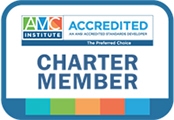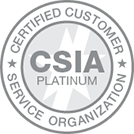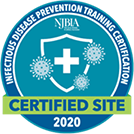In today’s competitive environment, not-for-profits—including membership organizations and associations—are vying for attention, engagement, and revenue just like their for-profit counterparts. The cornerstone of success in this arena is a well-defined, clearly articulated value proposition. Here we explore why a strong value proposition is essential for associations, outline the steps to crafting one, and discuss key strategies for making that proposition impactful.

Align Your Value Proposition with Mission and Vision
A value proposition is more than just a catchy tagline or a list of benefits. It’s a strategic statement that encapsulates the unique, compelling advantages your organization provides to its members, volunteers, sponsors, and the broader community. At its core, your value proposition should be aligned with your organization’s mission and vision.
Why is this alignment so crucial? Your mission and vision define the long-term goals and overarching purpose of your organization. When your value proposition reflects these elements, it becomes a natural extension of your organizational identity. This builds trust and makes it easier for members to understand how your offerings align with their own professional or personal goals.
Four Steps to Crafting a Compelling Value Proposition
Creating a strong value proposition involves understanding your audience and clearly communicating your unique benefits.
- Focus on Member Benefits: Start by developing a deep understanding of your core membership group’s needs, preferences, and pain points. It’s crucial to ensure that your offerings address these challenges directly.
- Define Your Unique Benefits Package: Clearly identify and articulate the key features, benefits, and advantages that your organization offers. How do these elements support your mission? Your benefits package should differentiate your association from competitors by highlighting unique aspects that are particularly valuable to your members.
- Craft a Compelling Statement: Develop a concise, persuasive value proposition statement that captures the essence of your organization. This statement should be clear, memorable and should resonate with your target audience. Focus on how your organization addresses industry challenges and opportunities in a way that is both impactful and emotionally engaging.
- Test and Refine: Your value proposition should not be static; it should evolve as your industry and members’ needs change. Gather feedback through surveys, perform A/B testing, and evaluate your programs regularly. Use this data to refine your value proposition, ensuring it remains relevant and effective. By evolving your solutions to meet changing member priorities, you position your organization as an indispensable support system.
Eight Keys to Unlocking a Strong Value Proposition
To further strengthen your value proposition, consider these eight strategic keys:
- Clarity: Your value proposition should be clear and straightforward, avoiding jargon and complexity. Members should immediately understand the benefits you offer.
- Relevance: Ensure that your value proposition addresses the specific needs and challenges of your target audience. The more relevant it is, the more compelling it will be.
- Differentiation: Highlight what makes your organization unique compared to competitors. This could be exclusive member benefits, industry-leading expertise, or unique networking opportunities.
- Emotional Appeal: Connect with your audience on an emotional level by addressing the personal impact of your offerings. Stories and testimonials can be powerful tools.
- Consistency: Maintain consistency across all your communication channels. Your value proposition should be reflected in your branding, marketing materials, and member interactions.
- Evidence: Support your value proposition with concrete evidence such as data, success stories, and testimonials. This builds credibility and trust.
- Simplicity: Keep your value proposition simple and to the point. A complex or lengthy statement can dilute its impact.
- Flexibility: While maintaining a core message, your value proposition should be adaptable to different segments of your audience. Tailor your messaging to address the specific needs of various member groups.
These strategies can help your association remain a relevant and indispensable resource in the lives of your members, fostering long-term growth and success.




